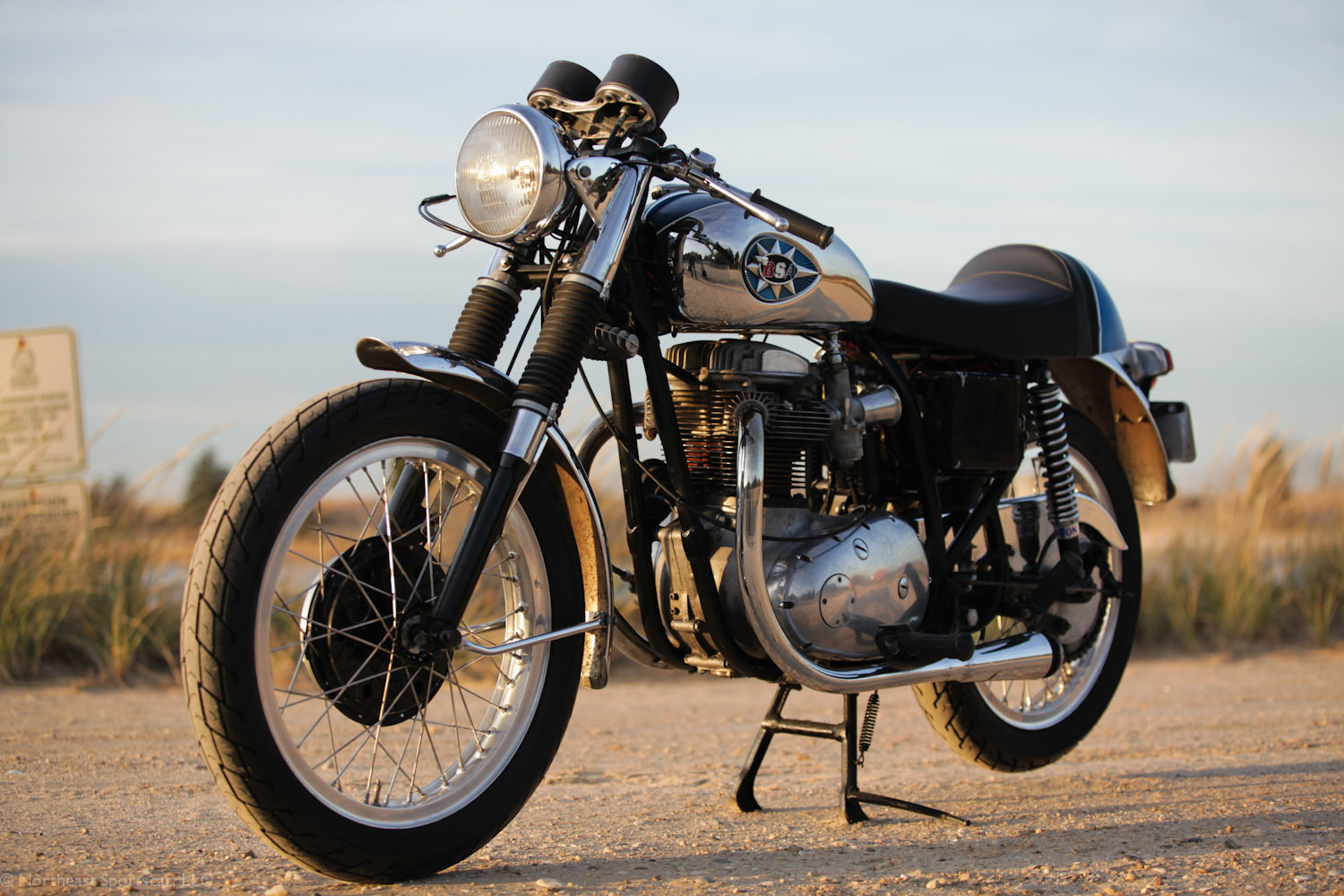1967 BSA Lightning
Electronic Ignition, Same Owner Last 16 Years, Borrani Wheels, Matching Numbers
History of BSA
“Although the [BSA] is fast, one of its most redeeming qualities must be the handling. Flinging any motorcycle around a roadracing course at high speed for long periods of time, under most circumstances is very tiring. Not so with the Lightning.”
— Cycle Guide, March 1972
What do the Crimean War, the manufacturing of rifles, and the building of bicycles have in common?
They're all events that led up to the British Birmingham Small Arms Co. -- better known to the world as BSA -- producing motorcycles that ultimately became among the most iconic in the world.
"Despite its rather unorthodox beginning, BSA endured and carved out an impressive place in motorcycling history," said Tigra Tsujikawa, marketing and special events manager for the AMA. "BSA Gold Stars, Shooting Stars and other models rightfully earned a reputation for performance on the track, and played a large role in the brand remaining popular long after the factory shuttered its doors in the 1970s. I'm personally looking forward to showcasing the marque at AMA Vintage Motorcycle Days, and highlighting the machines and people who made BSA famous."
The Birmingham Small Arms Co. was formed in 1861 by a group of gun makers to supply weapons to the British government during the Crimean War. As the war declined, the company branched out into making bicycles, and by 1903 produced its first experimental motorcycle, along with automobiles. Its first in-house motorcycle appeared in 1910, and a subsidiary, BSA Motorcycles Ltd., was created after the first World War saw the company move back into arms manufacturing for the duration.
In 1938, a new BSA model the M24 Gold Star, was released in commemoration of Wal Handley's dramatic 100-plus mph lap times at the infamous Brooklands concrete bowl.
Between wars, the company focused on refining its motorcycles into well-regarded, reliable transportation that sold well in England, where BSA boasted that one in four motorcycles on the road was made by their company. From the beginning and throughout its history, BSA made a splash with the evocative names it chose for its motorcycles: Blue Star, Empire Star, Golden Flash, Road Rocket, Spitfire, Thunderbolt and Lightning are among the most well known.
Perhaps its most famous model was the Gold Star, "born" in 1938 but refined after WWII. It was named after the Gold Star pins awarded to motorcycles that lapped the famed Brooklands track at more than 100 mph, and would ultimately become the bike of choice among England's young rockers, who stripped them of unnecessary parts and hot-rodded them into café racers.
During the 1950s the company turned to racing, fielding teams in the Junior Clubman class at the Isle of Man TT. By 1956, BSAs made up 53 of 55 entries in the class.
Looking to replicate its sales success with racing in the United States, the factory entered a team of racers in 1954 in the Daytona 200, which, at the time, was held on the beach course. Aboard a mixture of single-cylinder Gold Stars and twin-cylinder Shooting Stars, BSA riders swept the top five places in the race, cementing the brand's image in the U.S. as a performance machine.
Following a merger with the Norton Villiers Triumph Group, the combined company stopped producing BSA-branded machines in 1973. Still, BSAs endure today as both competitive vintage racers and, along with other British brands such as Triumph, staples of the modern café racer culture.
From: http://www.motorcycle-usa.com/3/3202/Motorcycle-Article/A-History-of-BSA-Vintage-Motorcycles-.aspx
History of the Lightning:
The BSA Lightning was designed as the all-round sportbike of the 1960s, planned largely for export to the US market to complement the touring Thunderbolt and the supersports Spitfire. When it was unveiled, it was one of the fastest motorcycles you could buy, the quintessential 60s British superbike. Development of the engine aimed to make it more reliable, quieter and less prone to oil leaks, with top speed sacrificed to improve mid-range and rideability. Nevertheless, with twin carburetors the A65L could still reach 108 mph (174 km/h). Improvements included an oil pressure warning light, but this had a tendency to malfunction, so riders learned to ignore it. A useful feature was an 'emergency starting' key position for times when the battery was flat to connect the alternator current directly to the ignition coils.
From: http://en.wikipedia.org/wiki/BSA_Lightning
This Bike:
This Lightning remained in the hands of the same owner for the last 16 years. It has been tastefully upgraded and looks as if it could have rolled right out of the Ace Cafe Parking lot in 1967. It has been fitted with Clubman bars and cafe seat, Borrani Wheels with Buchannan spokes, Hagon shocks, Supertrapp exhaust, a new battery, and a Boyer electronic ignition. While we don't know too much about the history of the bike or the restoration yet, it's clear someone went through the whole bike, upgraded it according to his taste, and had it riding nicely down the road. The bike runs very strong and fires eagerly. The cosmetics have light patina in places (but with very good chrome) indicative of an older restoration, but we think it lends the bike some character, and it bike makes a nice overall presentation. The speedometer is not currently reading. The late 60s Lightnings were swan song bikes for BSA. They were superbikes in their day and their performance today is still quite impressive. They make an incredible sound and just generally are a lot of fun to ride.
Please use the contact box below for any questions, call 631-318-0155 or simply email info@northeast-sportscar.com
Please Contact Us to Learn More About This Bike












































